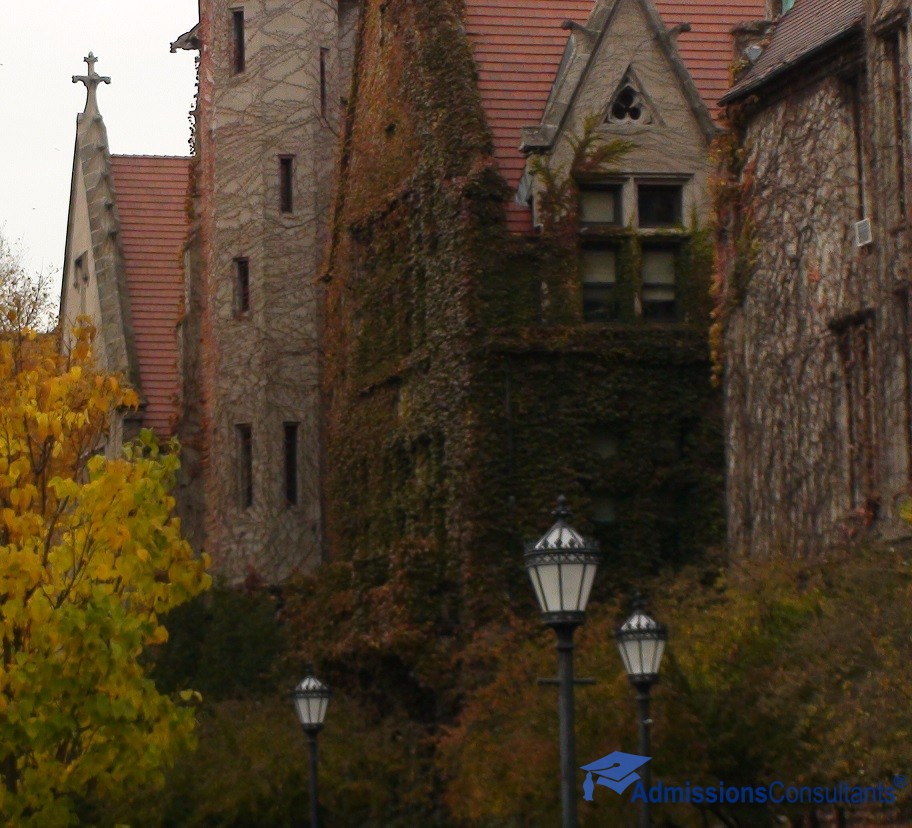
The University of Chicago Law School, founded in 1902, offers a demanding degree program, which has made it a breeding ground for some of the best lawyers in the country. With just under 600 students, class sizes remain small with a fairly low student to faculty ratio. Just over 80 full-time and 130 part-time faculty members are on hand to help groom Chicago Law students to be ready for Supreme Court clerkships and placements at prestigious law firms. Aside from academics, students can participate in extracurricular organizations and clubs on campus. The school is located in Chicago’s south side neighborhood of Hyde Park and many choose to live in university-owned housing or private apartments near campus.
 There are many opportunities for students to expand upon their law education. They can earn joint master’s degrees in business or public policy through Chicago’s Booth School of Business or the Harris School of Public Policy Studies. These dual degrees can be achieved in four years, versus the traditional three for law school. Students can also attend up to four classes at other University of Chicago graduate schools. Second- and third-year University of Chicago Law School students take part in six legal clinics with topics like start-up business issues or human rights grievances. Students can also take advantage of the large metropolis to seek employment prospects. More than 15% of students in the past decade have gone on to pursue US Supreme Court clerkships and between 15% and 25% of students generally take positions in state or federal clerkships.
There are many opportunities for students to expand upon their law education. They can earn joint master’s degrees in business or public policy through Chicago’s Booth School of Business or the Harris School of Public Policy Studies. These dual degrees can be achieved in four years, versus the traditional three for law school. Students can also attend up to four classes at other University of Chicago graduate schools. Second- and third-year University of Chicago Law School students take part in six legal clinics with topics like start-up business issues or human rights grievances. Students can also take advantage of the large metropolis to seek employment prospects. More than 15% of students in the past decade have gone on to pursue US Supreme Court clerkships and between 15% and 25% of students generally take positions in state or federal clerkships.
There are more than 60 organizations to participate in on campus, with groups ranging from the Winston Churchill Gaming Society to the Law School Musical which is performed every winter. Chicago Law was one of the first campuses to have a chapter of the Federalist Society. Many students are also involved with the American Constitution Society for Law and Policy. The Law School has six professional journals, three of which are student run. These are the “The University of Chicago Business Law Review,” “The University of Chicago Law Review,” “The Chicago Journal of International Law,” and “The University of Chicago Legal Forum.”
 The broad opportunities University of Chicago Law School has to offer also include an International Human Rights Internship Program in Australia, India, Korea and South Africa. The school provides a Law Library that is open 90 hours a week and has 10 full-time librarians. Chicago Law has proven over the years to produce some of the brightest legal minds in the country; students interested in a tight-knit community and fun on-campus activities should look into the campus.
The broad opportunities University of Chicago Law School has to offer also include an International Human Rights Internship Program in Australia, India, Korea and South Africa. The school provides a Law Library that is open 90 hours a week and has 10 full-time librarians. Chicago Law has proven over the years to produce some of the brightest legal minds in the country; students interested in a tight-knit community and fun on-campus activities should look into the campus.
2023 acceptance rate: 12.78%
Number of 2023 applicants: 5,259
Number of 2023 matriculants: 180
Median LSAT: 173
Median GPA: 3.94
LSAT range (25 to 75 percentile): 169 to 175
GPA range (25 to 75 percentile): 3.83 to 3.99
Early decision deadline: December 1. Notification by end of December. Early decision admissions are binding. If admitted, you must commit to attending the University of Chicago Law School and withdraw any pending applications made to other programs.
Regular decision deadline: March 1. Decisions are made on a rolling basis.
University of Chicago law students must start in the fall.
Tuition (2023-2024): $76,479
Room, board, and other (2023-2024): $36,180
Total estimated cost of attendance (2023-2024): $112,659
Students who receive grants: 83%
Median grant amount: $15,000
![]() Conditional Scholarships
Conditional Scholarships
U of C does not award law school scholarships that may be reduced or eliminated based on academic performance other than failure to maintain good academic standing.
Employment Statistics
Employed full-time, long-term, bar passage required: 95.3%
Employed full-time, long-term, JD advantage: 1.4%
Career Placement Results
BigLaw: 59.4%
Federal Clerkships: 20.8%
Transfers
Net Transfers: +13
Transfers Out: 3
Average Bar Passage Differential (first-time takers): 18.71%
Class Size Analysis
Under 25: 77%
25-49: 14%
50-74: 6%
75-99: 2%
100+: 1%

- 1111 E. 60th Street Chicago, IL 60637
- (773) 702-9494
- admissions@law.uchicago.edu
- https://www.law.uchicago.edu/











